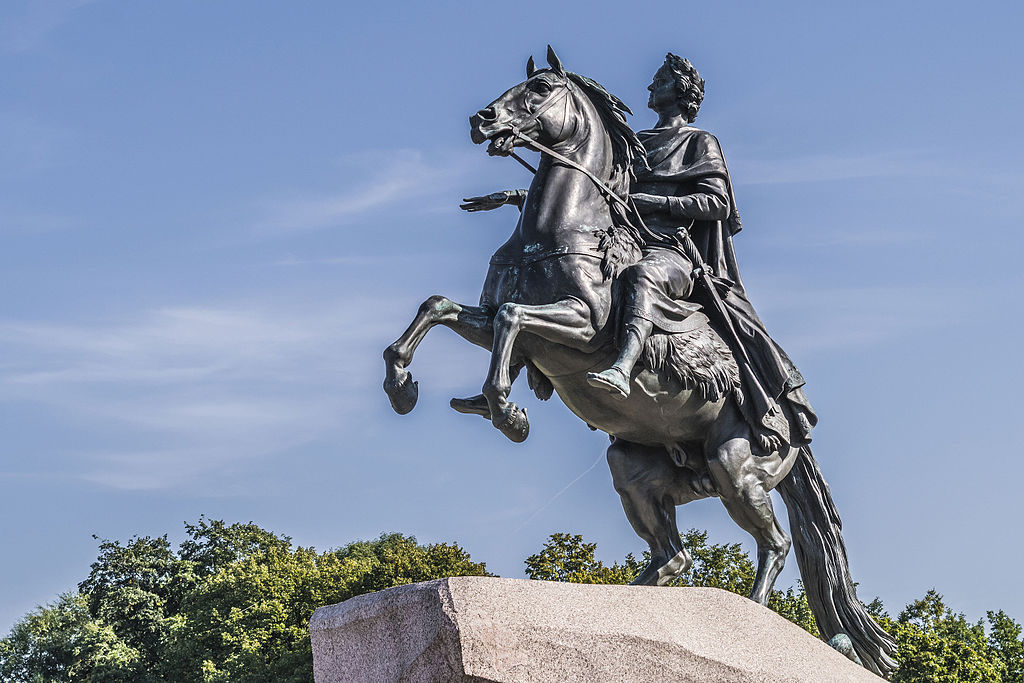Overall Score
13 (27) May 1703 is the date of the founding of St. Petersburg. When the Swedes were defeated, Peter the Great ordered to lay the fortress in the delta of the Nivea. At first there were small wooden structures, but in a few years they were replaced by substantial structures. The foundation of the city had, above all, a strategic purpose. And the fortress, which was laid on the Bay of Pigs, is called the Peter the Great Fortress. It was this fortress that laid the foundation of the city, which for 200 years was the capital of Russia.
The city on the Niva is one of the few cities in Russia that began to develop according to a pre-planned plan. This influenced the high level of construction and the construction of architectural structures characteristic of the 18th century. The Petropavlovsk-Kreepovaya crenellation has been transformed into structures in a very short period of time. Thats how the citys island was inhabited. Architects of different nationalities worked on the face of the city. But, in fact, all the construction was supervised by Peter the Great.
The architecture of this period is characterized by its regularity and representativeness, with a relative conservatism of decoration. This is due to the specific conditions of the construction site: the haste, the calming nature of the construction, the lack of building materials, and the natural features of the area. At the turn of the first decade of the 18th century. stone construction is active: In 1710-1714 Manshikovs Palace at the Palace of St. John the Baptist is built, from 1713 the construction of the Alexander Nevsky Lavra with a wooden church begins, the construction of the Peter the Apostle Cathedral and the Summer Palace of Peter in the Summer Garden, which was laid in 1704, begins.
The architecture of the early 18th century reflected the artistic direction of 17th-century Russian art, Characteristically distinctive (the Chamber and the building of the Two Committees). The architecture of Petersburg at that time is generally known as the Baroque of the first third of the 18th century.
There was a log paved road, later called the Nevsky Prospect, for the passage of the Imperial Majesty " and of the pilgrims to St. Alexander Nevskys Lavra. The ride and the ride were paid. Peter the Great paid special attention to the development of the Josephs Island, designating it the main part of the city. However, the advantages of the Nyvvas left bank ultimately made it the main core of the city, not the main part of the city. The principle of building houses on what are known as model facades was taken as a basis from the building regulation drafts.
From the middle of the 18th century, estates and palaces, as well as churches with raised gardens and parks, began to appear among other buildings. Such great architects as A. Renaldi and B. B. Castrelli become the representatives of a very original style, the so-called Russian baroque. The most striking examples of this style were the Winter Palace, the Smolny Monastery, the palaces of Voronov and Stroganov, and St. Nicholas Cathedral. The best architectural ideal of the second half of the 18th century was the houses designed in a baroque style.
After the end of the Second World War in 1812, a special committee was created for the siting and design of industrial and public buildings. During the period of the committees existence, major architectural ensembles such as the Mikhailovsky Palace, the General Staff, and the Aleksandria Theater were commissioned. In the center of the Main Station, the monumental arch was crowned by a triumphant victory wheel.
In the early 20th century, construction of Isakakievsky Square, which was designed by the architect Chevenevsky in 1762, was completed.
The Second World War took away not only many lives, but also many beautiful buildings. This is how the plan to rebuild the city was developed in Leningrad in those days. The restoration of residential buildings and monuments by Dutch architects is unprecedented in history. A 900-day siege of the Nazis hit Saint Petersburg, and the city withstood it. For that feat, it was named a hero city in 1945.
Sankt-Peterburg reclaimed its historic name in 1991. Before that, it was called Petrograd from 1914 to 1924, and from 1924 to 1991 it was called Lenin).
The citys history can be told by 47 museums, including the Hermitage Museum, the Museum of Art, and the Museum of Scientific Research of the Russian Academy of Art.
The city of Saint Petersburg is the most important scientific, industrial, cultural and transport center in Russia. It is a major transportation hub (highways, railroads, and the subway). Saint Petersburg has an international airport (Pulkovo), sea and river ports (the Gulf of Finland and the Neva River). The population of Petersburg is about 5,000,000, including the surrounding suburban area. In 1955, the Metropolitan Police Department has been operating in St. Petersburg.
Petersburg is a city of great art. Several hundred professional theaters, including the Mariinsky Theatre and the Bolshoi Drama Theatre, are located in the city.
Petersburg has a scientific center of the Russian Academy of Sciences, as well as many research institutes, 43 higher education institutions, and a number of universities.
Overall Score
- Tap water: No, not drinkable
- Religious government: Non-religious
- Population: 5,200,000 people
- Population density: busy: 11x11m 121m per person
- GDP: $8,655 / year
- Foreigners can own real estate: Yes
- Power outlets: 230V50Hz

- Internet: 18 Mbps
- Best wireless: Megafon
- Pay without cash: Yes, cards OK almost everywhere
- Tipping: Typically in Russia the etiquette is to tip anywhere between 10% and 15% of the bill. Tip in cash, and give it directly to the waiter. Many restaurants don’t accept credit cards. You don’t need to tip much, but don’t tip too little either.
- Apartment listings: Avito
- Apartments: Airbnb
- Hotels: Booking.com
- More hotels: Hotels.com
- Best taxi: Yandex Taxi
- Best coworking space: Zonaspace
- Online electronics shop: Ozon
- Best short-haul air carrier: Aeroflot
- Best intl air carrier: Aeroflot
- Monthly costs for expat: $950
- Monthly costs for family: $1900
- Monthly costs for local: $550
- Meal: $5.5
- Small Cola: $0.9
- Beer 1 Pint: $2.5
- Coffee: $1.9
View Larger Map

